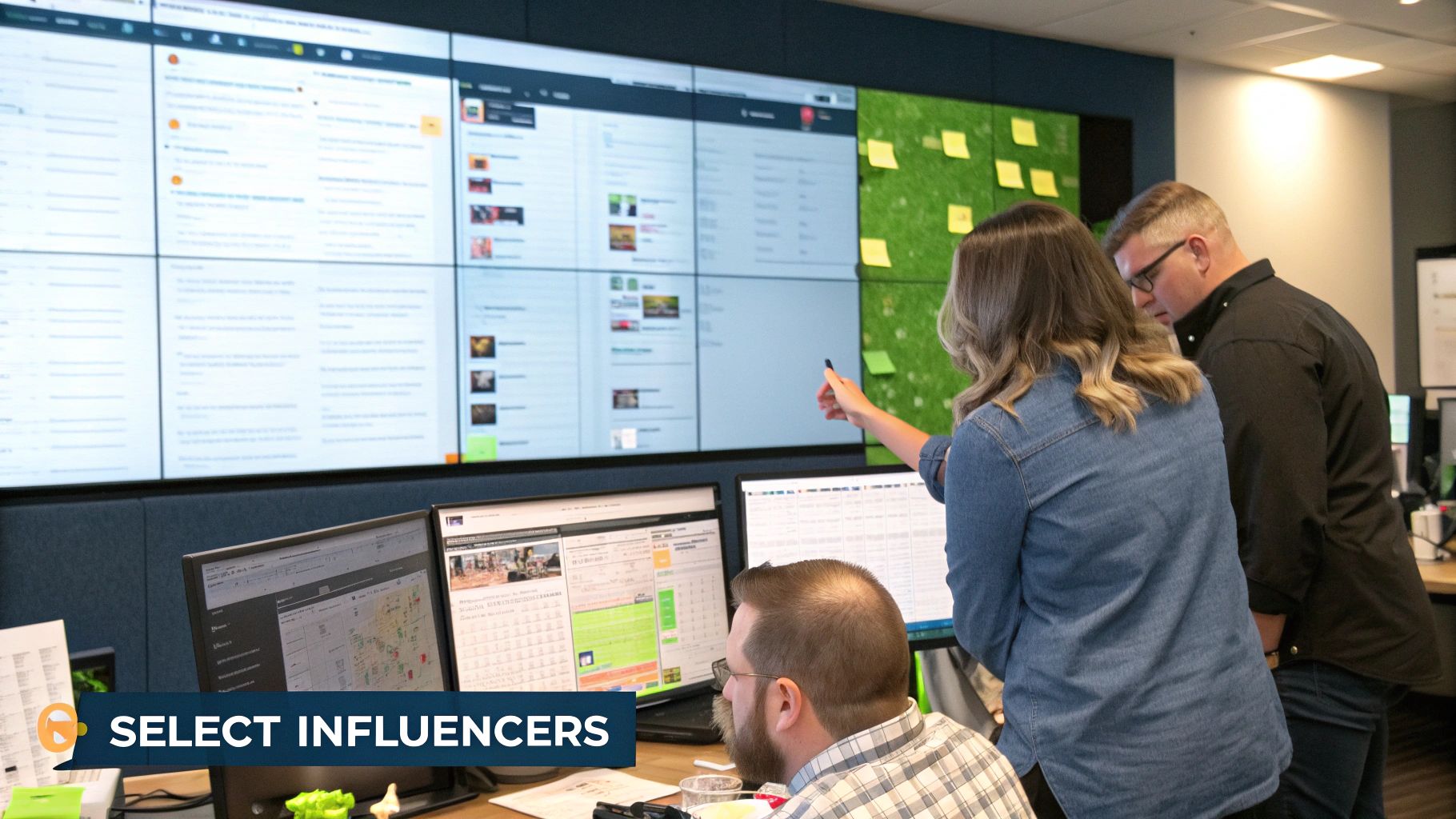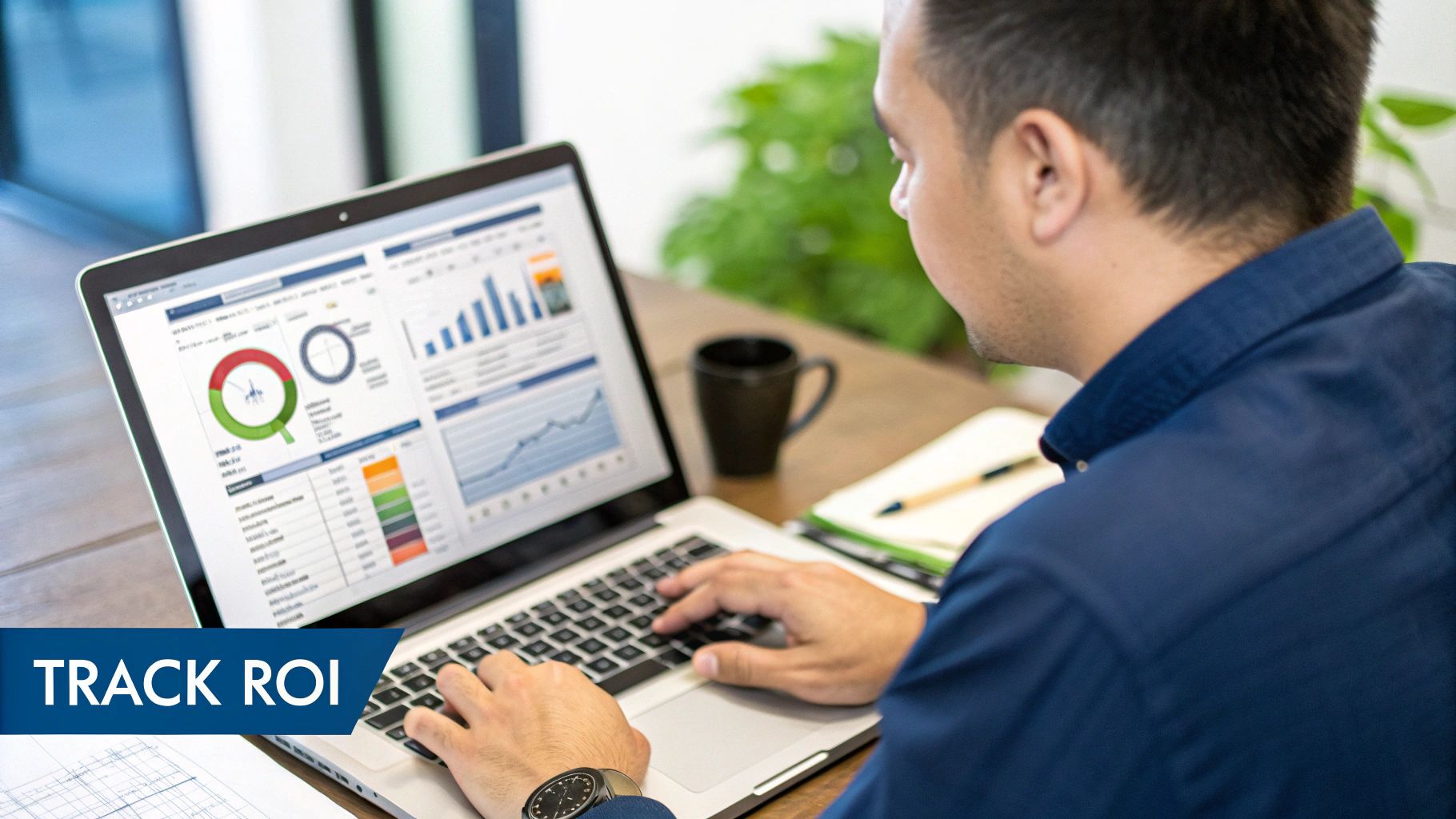Why Shopify Influencer Marketing Drives E-commerce Success
Shopify merchants now view influencer partnerships as a core revenue driver rather than an experimental project. Top stores bring creators into their marketing efforts, using genuine stories to build trust and increase visibility. Merchants often see concrete gains in website traffic and average order value when working with influencers.
Shopify’s Influencer-Friendly Integrations
- Product Tagging in social posts and videos
- Shopify Collabs for affiliate link management
- Conversion Tracking using UTM parameters and custom discount codes
- YouTube Shopping integration that embeds shoppable products directly in videos
This set of features removes manual workarounds and lets you focus on cultivating creative partnerships.
Influencer marketing plays a significant role for e-commerce platforms like Shopify, especially on social media. By the end of 2024, global investment in this channel is expected to reach $24 billion, reflecting its steady growth. More than half of brands that team up with influencers operate online stores, underlining the connection between these partnerships and sales growth. For further statistics, see Sixth City Marketing insights.
Debunking Influencer Marketing Myths
| Myth | Reality |
|---|---|
| High cost for no guarantee | Campaigns can yield ROIs of 6–11× typical ad spend |
| Only mega-influencers move the needle | Nano and micro-influencers often drive higher engagement |
| Attribution is too messy | Shopify’s analytics and UTM tracking link each sale |
Success Stories From Shopify Merchants
- Beauty Brand X doubled its monthly revenue within 3 months by partnering with 10 nano-influencers in a niche community.
- Home Goods Store Y recorded a 150% increase in email sign-ups after featuring influencer reviews on product pages.
- Apparel Startup Z achieved a 4× ROI by combining micro-influencers with affiliate codes, optimizing both reach and budget.
These examples demonstrate how well-planned influencer collaborations can shift growth trajectories.
This robust foundation in integration and measurable results paves the way for establishing targeted influencer relationships. In the next section, we’ll cover how to find the right influencer match for Shopify success.
Finding Your Perfect Influencer Match for Shopify Success
Selecting the right influencer tier can balance reach, trust, and cost efficiency for your Shopify store. This section walks through each influencer category, helping you align partner options with your growth goals.
Below is a data chart outlining influencer tier characteristics, including follower counts, engagement rates, typical costs, and recommended use cases.
This data chart shows that nano influencers dominate with 44% of partnerships, followed by micro influencers at 26%, while mid-tier through mega influencers share the remaining 30%.
Strategic Influencer Tiers for Shopify Merchants
A comprehensive analysis of influencer categories and their strategic value for different Shopify business models
| Influencer Type | Follower Range | Average Engagement Rate | Typical Cost | Best For |
|---|---|---|---|---|
| Nano | 1,000–10,000 | 4.5% | $50–$200/post | Niche products, local campaigns |
| Micro | 10,000–100,000 | 2.8% | $200–$1,000/post | Targeted audiences, specialty categories |
| Mid-Tier | 100,000–500,000 | 1.7% | $1,000–$5,000 | Category-specific launches |
| Macro | 500,000–1M | 1.2% | $5,000–$20,000 | Seasonal promotions, broad exposure |
| Mega | 1M+ | 0.8% | $20,000+ | National branding, flagship events |
From this comparison, you’ll see that nano and micro influencers offer higher engagement at lower costs, while macro and mega influencers are suited for broad awareness campaigns.
Merchants report an 11× ROI from influencer-led activations, leading 85% to increase campaign budgets by 2025. Explore this topic further.
Assessing Influencer Preferences With Data Insights
When you examine the data chart above, notice how merchants split their influencer spend across tiers:
- Nano influencers: 44% of brand partnerships
- Micro influencers: 26%
- Mid-Tier through Mega: 30%
These figures show a clear preference for engagement-rich micro-scale creators when planning influencer campaigns.
Framework for Evaluating Influencer Fit
Before reaching out, score each candidate against these core criteria:
- Audience Quality: Check demographic alignment beyond raw follower counts
- Content Authenticity: Review past posts for genuine storytelling and brand mentions
- Brand Alignment: Ensure values, tone, and aesthetics match your store’s identity
- Engagement Metrics: Prioritize meaningful interactions such as comments, saves, and shares
Combining Tiers for Comprehensive Growth
Relying on a single tier can limit your campaign’s impact. Many merchants blend tiers to balance immediate sales with lasting awareness:
- Nano and Micro: Constant product seeding in niche circles
- Mid-Tier: Targeted launches within specific verticals
- Macro or Mega: Seasonal peaks or broad-brand exposure
Blending these tiers can drive short-term sales and long-term visibility, giving your marketing strategy both depth and scale.
You might be interested in: How to master multi-tier influencer blending
Crafting High-Converting Influencer Campaigns for Shopify
Once you’ve defined your influencer tiers, it’s time to build campaigns that drive real sales. On Shopify stores, a clear plan helps influencers focus on specific objectives instead of generic promotions. Well-defined goals also align expectations across teams and ensure your Shopify influencer marketing delivers measurable results.
Setting Clear Campaign Objectives
Before you launch, decide what success looks like:
- Align targets with business metrics such as new customers acquired, average order value, or repeat purchase rate.
- Use the SMART framework: Specific, Measurable, Achievable, Relevant, Time-bound.
- Assign internal owners for each objective to maintain accountability.
A solid objective framework makes it easy to tap into Shopify’s native features.
Leveraging Shopify-Specific Features
Shopify offers built-in tools to track and optimize influencer performance:
- Create custom discount codes to attribute conversions.
- Monitor sales via affiliate programs in Shopify Collabs or compatible third-party apps.
- Enable seamless checkout by pre-filling carts for influencer referrals.
Social proof matters: 73% of U.S. merchants rank it as their top tactic, and 61% of Shopify stores report a 25% sales increase from influencer partnerships. Micro-influencers can deliver up to 4× higher ROI than celebrity endorsements. Discover more insights about Shopify influencer tools.
Crafting Influencer Briefs That Resonate
An effective brief balances guidance with creative freedom. Be sure to include:
- Campaign overview and brand story
- Target audience demographics and key pain points
- Deliverable requirements: formats, channels, posting frequency
- Tone, messaging pillars and mandatory hashtags
- Timeline with milestones and review checkpoints
Close your brief with an open prompt—“How can you bring this story to life?”—to spark authentic ideas.
Balancing Creative Freedom And Brand Guidelines
Influencers thrive on authenticity, but clear guardrails prevent off-brand content. Share a concise style guide or mood board that covers colors, fonts and tone, then step back. This approach builds trust and leads to genuine storytelling.
Compensation Models That Motivate
Match the payment model to your campaign goals:
| Model | Description | Best When… |
|---|---|---|
| Flat Fee | One-time payment for agreed deliverables | Budget is fixed and deliverables are clear |
| Commission | Percentage of sales via unique code or link | You want results-based payment |
| Product Exchange | Free products or experiences in return for content | High-value items and long-term collaborations |
| Affiliate Program | Recurring commissions on each referred sale | Building ongoing brand advocacy |
Common Pitfalls And Solutions
Even well-planned campaigns can hit snags. Watch for:
- Unrealistic deadlines → Add review buffers to your schedule
- Misaligned expectations → Host a kickoff call for clarity
- Insufficient tracking → Test discount codes and UTM links before go-live
By following this blueprint, your Shopify influencer campaigns will evolve from ad hoc promotions into structured programs that drive consistent growth.
Essential Shopify Apps That Supercharge Influencer Results
With a solid campaign plan in place, the right Shopify apps handle routine tasks and elevate influencer ROI. Discovery platforms help you find creators with high engagement in seconds instead of days. Meanwhile, analytics tools deliver real-time data so you can invest more in top performers. The outcome? You can run dozens of partnerships without adding extra hires.
Influencer Discovery And Recruitment
These apps link you to influencers whose audiences match your ideal buyer profile:
- Shopify Collabs: Built-in affiliate program and talent scouting
- Refersion: Automated outreach, contract templates, SKU tagging (Refersion)
- UpPromote: Niche, location, and audience-size filters (UpPromote)
- Grin: Audience demographics, past campaign benchmarks (Grin)
These tools replace manual spreadsheets and speed up onboarding.
Performance Analytics And Reporting
Once creators are on board, you need insights to fine-tune spend and content:
- Track conversions with custom discount codes and UTM parameters
- Compare creator performance side-by-side on live dashboards
- Automate monthly summary reports highlighting your top 3 metrics
By spotting which influencers drive the highest conversion rate or average order value, you can tweak compensation in real time.
Automation Tools For Scaling Outreach
Let automation handle repetitive work so you focus on strategy:
- Bulk email templates with scheduled follow-ups
- Auto-fulfillment triggers to send products upon approval
- Content-amplification modules reposting creator content in your store
With these automations, you can manage 50+ influencers without sacrificing quality.
Performance-Driven Shopify Apps for Influencer Marketing
A comprehensive assessment of the most effective Shopify applications for optimizing influencer campaign performance
Below is a comparison of top influencer-marketing apps—highlighting their main features, pricing, ideal use cases, and user satisfaction.
| App Name | Key Features | Price Range | Best For | User Rating |
|---|---|---|---|---|
| Shopify Collabs | Affiliate links, product tagging | Free | Native Shopify integration | 4.7/5 |
| Refersion | Recruitment, contract automation | $89–$299/month | Mid-sized stores | 4.6/5 |
| UpPromote | Advanced search filters, commission rules | $19–$199/month | Niche-focused campaigns | 4.5/5 |
| Grin | Audience demographics, ROI benchmarks | $200–$1,000/month | Data-driven enterprises | 4.8/5 |
| HypeAuditor | Fraud detection, authenticity scoring | $50–$400/month | Quality assurance | 4.4/5 |
In this table, you’ll see each app’s standout capabilities, the investment required, and which merchants will benefit most. User ratings reflect aggregated store reviews as of 2024.
Implementation Tips And ROI Outlook
Integration usually takes 1–2 weeks, and most merchants hit break-even in about 3 months. To launch successfully:
- Pilot one discovery app alongside your current process
- Set up automated tracking before your next campaign
- Review app reports weekly and adjust spend as needed
Ready for more tools? Explore Influencer Marketing Topics
Measuring What Matters: Tracking Influencer Impact on Shopify
When you invest in Shopify influencer marketing, it’s important to look beyond vanity metrics to measure true ROI. This guide outlines steps to connect influencer actions directly to sales so you can identify your top-performing partnerships.
Setting Up Reliable Attribution Models
To know exactly which influencer drives a sale, you need tracking that follows every click to conversion. Start by adding UTM Parameters to each influencer link so traffic sources map cleanly in Shopify’s reports. Pair this with Custom Discount Codes to tag purchases and filter them in your orders dashboard. This setup removes guesswork and shows the dollar value each creator brings to your store.
• UTM Parameters: Source, medium, campaign
• Custom Discount Codes: Code visits, order count, AOV
• Pixel Tracking: Capture Facebook and TikTok events in Shopify
• Manual Tagging: Add order note tags for deeper segmentation
With these models in place, you can select metrics that match each campaign’s goals.
Choosing The Right Metrics For Your Objectives
Different campaigns call for different measures. Align your KPIs with the goal at hand:
• Brand Awareness: Impressions, reach, share of voice
• Engagement: Likes, comments, video views
• Direct Sales: Number of orders, revenue per campaign
• Customer Retention: Repeat purchase rate, subscriptions
| Metric | What It Shows | Best For |
|---|---|---|
| Reach | Unique viewers | Awareness and market tests |
| Engagement Rate | Depth of interaction | Content resonance and feedback |
| Conversion Rate | Visitors who complete a purchase | Sales-focused campaigns |
| Average Order Value | Spend per customer | Upsell and cross-sell evaluation |
This table helps you set clear KPIs that serve both brand growth and sales targets.
Building Actionable Dashboards
Once data is flowing, unify it in dashboards that refresh in real time. Shopify Reports can break down sales by UTM or discount code, while Google Data Studio merges ad spend, influencer fees, and revenue in one view. A consolidated dashboard highlights top performers and lets you reallocate budgets quickly.
• Custom widgets for orders by influencer
• Trend charts comparing weekly ROI
• Automated alerts for dips below 70% target conversion
• Cohort views for influencer-driven customer groups
A clear dashboard surfaces insights fast and points to areas for further testing.
Advanced Techniques: Incrementality And CLV
For deeper analysis, run incrementality tests and track Customer Lifetime Value (CLV) to see the full impact of influencer activity. One brand ran an A/B split and saw a 20% uplift in new-customer orders. Another measured CLV over 3 months and found influencer-sourced customers spent 30% more than the average.
To set up these tests:
- Randomly assign 50% of your audience to view influencer content.
- Compare new-order rates between test and control groups.
- Calculate CLV for each segment over a set period.
- Adjust influencer budgets based on net incremental profit.
Combining attribution models with these methods gives you a complete view of your Shopify influencer marketing ROI and supports smarter investment decisions.
The Future of Shopify Influencer Marketing: Emerging Trends
As Shopify Influencer Marketing evolves, merchants are integrating features that bring browsing and buying closer together. Emerging tools like shoppable live streams, augmented reality demos, AI-driven influencer matching, and native social commerce integrations are raising expectations for brands and creators. These features promise stronger customer connections but also introduce new technical and logistical considerations.
Shoppable Live Streams Take Center Stage
Live shopping has moved into the mainstream, with global live stream commerce expected to reach $926 billion by 2025 thanks to real-time engagement and impulse buys.
- Real-time Q&A with instant “Buy Now” buttons
- Cross-platform broadcasts on Instagram, TikTok, and YouTube
- Analytics dashboards that monitor conversions as they happen
To avoid cart abandonment, merchants need reliable, low-latency streams paired with mobile-optimized checkout flows.
Augmented Reality Product Demonstrations
Augmented reality (AR) lets shoppers preview products in 3D before making a purchase. Studies show 40% of online shoppers are more inclined to buy after an AR experience.
A skincare brand used AR to let customers test foundation shades on live models, boosting session time by 25%. Treating AR like a “virtual fitting room” can reduce returns and build buyer confidence.
AI-Powered Influencer Matching
Finding the right creator can feel like searching for a needle in a haystack. AI-powered matching tools analyze audience demographics, engagement rates, and past campaign data to shortlist top influencers in minutes instead of weeks.
| Aspect | Manual Matching | AI-Powered Matching |
|---|---|---|
| Speed | Days to weeks | Minutes |
| Accuracy | Subjective | Data-driven |
| Scalability | Limited outreach | Unlimited |
| ROI Uplift | Baseline | +30% average |
This precision helps merchants allocate budgets more effectively and forecast campaign performance with greater confidence.
Native Social Commerce Integrations
Shopify’s roadmap promises tighter links between online stores and social apps. Soon, merchants will be able to:
- Tag products in Stories and Reels with one click
- Sync inventory across Facebook Shops, Pinterest, and Snapchat
- Enable in-app checkout with Shop Pay
These enhancements cater to shoppers who expect a seamless journey from scrolling to purchase.
You might be interested in: Authors’ Perspectives on Influencer Strategies
Early adopters of these trends can secure a competitive edge. REACH Influencers can help you connect with micro and nano creators today: Reach Influencers






